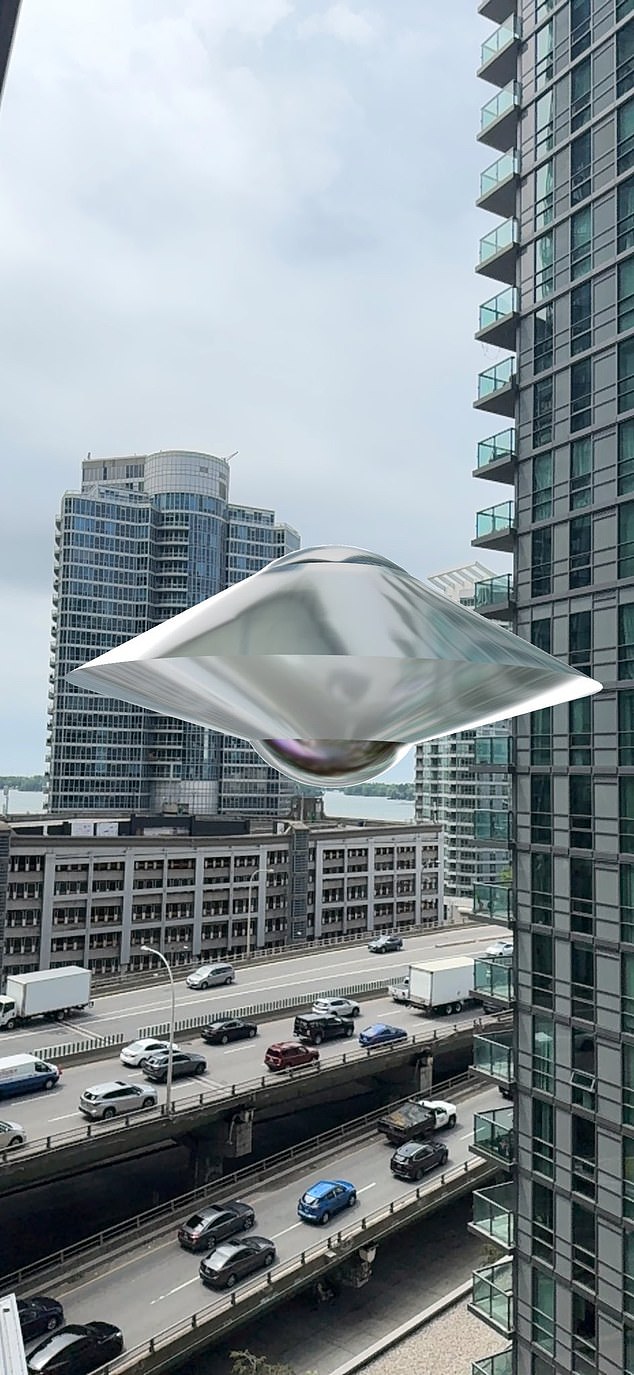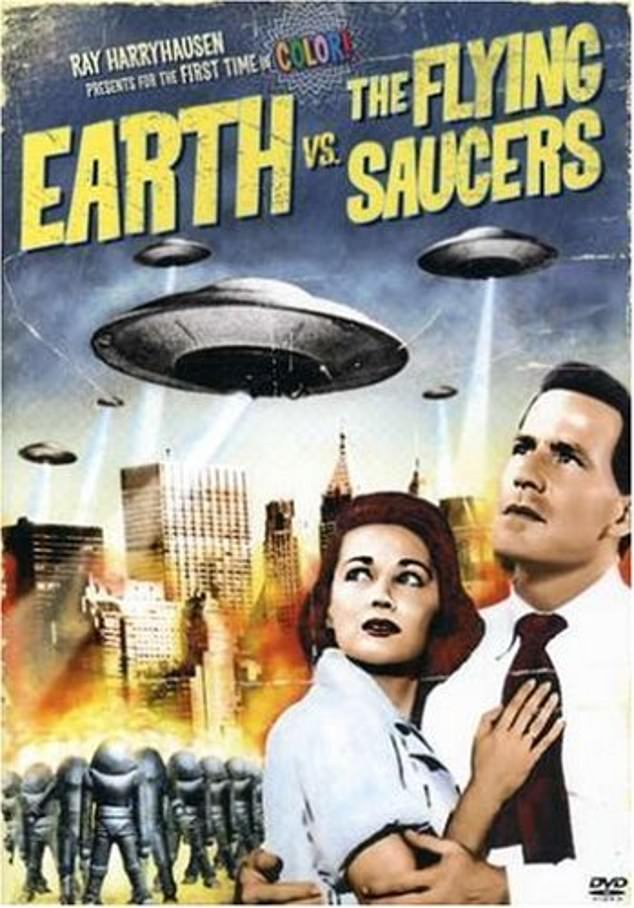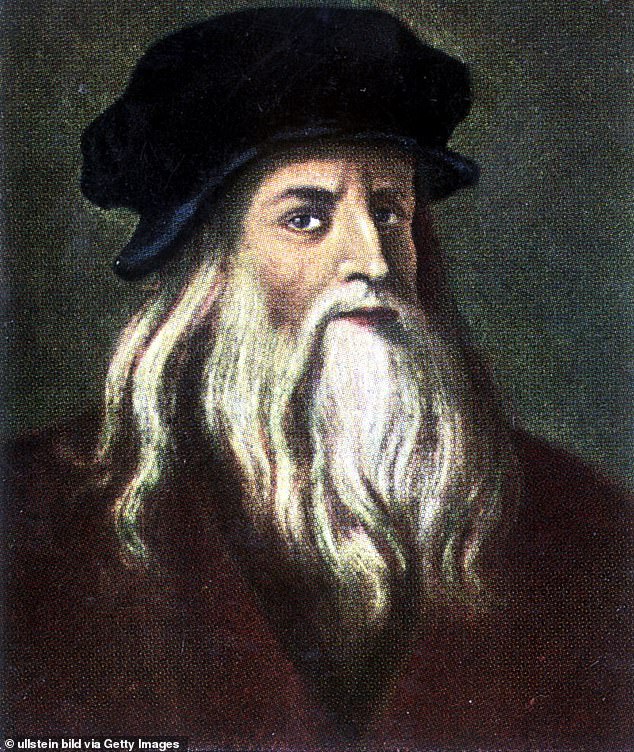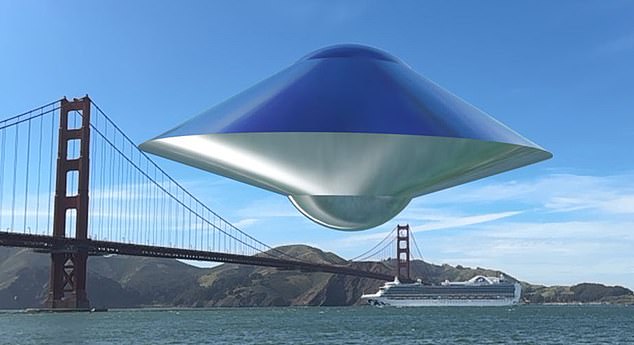Shaped like a flying saucer, it looks more like a UFO than your next Uber.
But this sci-fi-style vehicle is, in fact, the latest in the line of electric planes that will take to the skies over the next decade.
The fully autonomous ‘Invo Moon’ offers up to three passengers a 360-degree panorama up and down while traveling at speeds of up to 400 km/h.
Crucially, it has been designed to be near silent, using a flight system hidden within its shell rather than relying on noisy exposed propellers like many of its competitors.
The £280,000 plane, which is the same size and weight as a small family car, will be able to move in any direction, similar to a handheld drone.
Inventor Leo Kayali, a former Tesla engineer, told the Daily Mail that the design was inspired by Leonardo Da Vinci’s drawings more than five centuries ago.
The goal is to have it certified by the US aviation authority by 2027 and launch it in “all major cities, including London” by the end of the decade.
He said future owners could even have it running like an Uber while they weren’t using it and “make money while they’re sitting at home.”
UFO-like electric flying vehicle that could be your next Uber, based on Da Vinci drawings from the 1480s

The fully autonomous ‘Invo Moon’ offers up to three passengers a 360-degree panorama up and down while traveling at speeds of up to 400 km/h.
Last year, the government announced it expected flying taxis to “routinely” take to the skies of Britain by 2028, and potentially operate without a pilot by 2030.
Ministers set out ambitious plans to overhaul current regulations and infrastructure, with the technology expected to boost the UK by £45 billion by the end of the decade.
The Invo Moon, which is 16ft in diameter and weighs 2,500lbs, can be pre-ordered for £2,000 and will ultimately cost around £280,000 upon delivery.
However, Kayali believes the vehicles, which he says should be cheap to build when mass produced, could sell for less than £50,000 in the future.
While most electric flying vehicles rely on exposed propellers, the Invo Moon keeps everything within the aluminum frame.
The vehicle uses a complex new aerodynamic design in which a dozen motors, all with rotating spheres, are placed in a circle around the side of the vehicle.
By using these motors in groups of four at a time, it can move in any direction 360 degrees, meaning it has no front or back. To land, it extends three retractable legs.
Kayali said this means there is very little vibration, so the machine will emit no more than 45 decibels while traveling, almost as loud as the patter of light rain.

The plane, valued at £280,000 and the same size and weight as a small family car, will be able to move in any direction. Pictured: Cover of the 1956 science fiction film, Earth vs. the Flying Saucers.

Inventor Leo Kayali, a former Tesla engineer, told the Daily Mail that the design was inspired by Leonardo Da Vinci’s drawings more than five centuries ago.
Most other eVTOLs operate at about 85 decibels, equivalent to the sound of a blender, and also generate a lot of unnecessary excess wind, he said.
Inside the cabin, there are three swiveling and fully reclining heated seats that offer views from above and below through the plexiglass windows.
The “luxury” vehicle will also feature ambient lighting, an ice maker and smart TVs.
It has a range of up to 300 miles and takes no more than 30 minutes to charge from 20 to 80 percent, Kayali says.
While the design may look futuristic, it is actually based on concepts first invented by Da Vinci in the 1480s.
The exterior is inspired by the Italian artist’s ‘armored vehicle’ drawings, while the internal flight mechanism is a new interpretation of his ‘air screw’ design, considered a precursor to the helicopter.
The driving itself is autonomous and has been designed to follow a three-lane system similar to a highway, but ascending vertically.
The speed limit increases as you go up each level (from 100 mph to 400 mph) and you can only land once you return to the slower lane.


